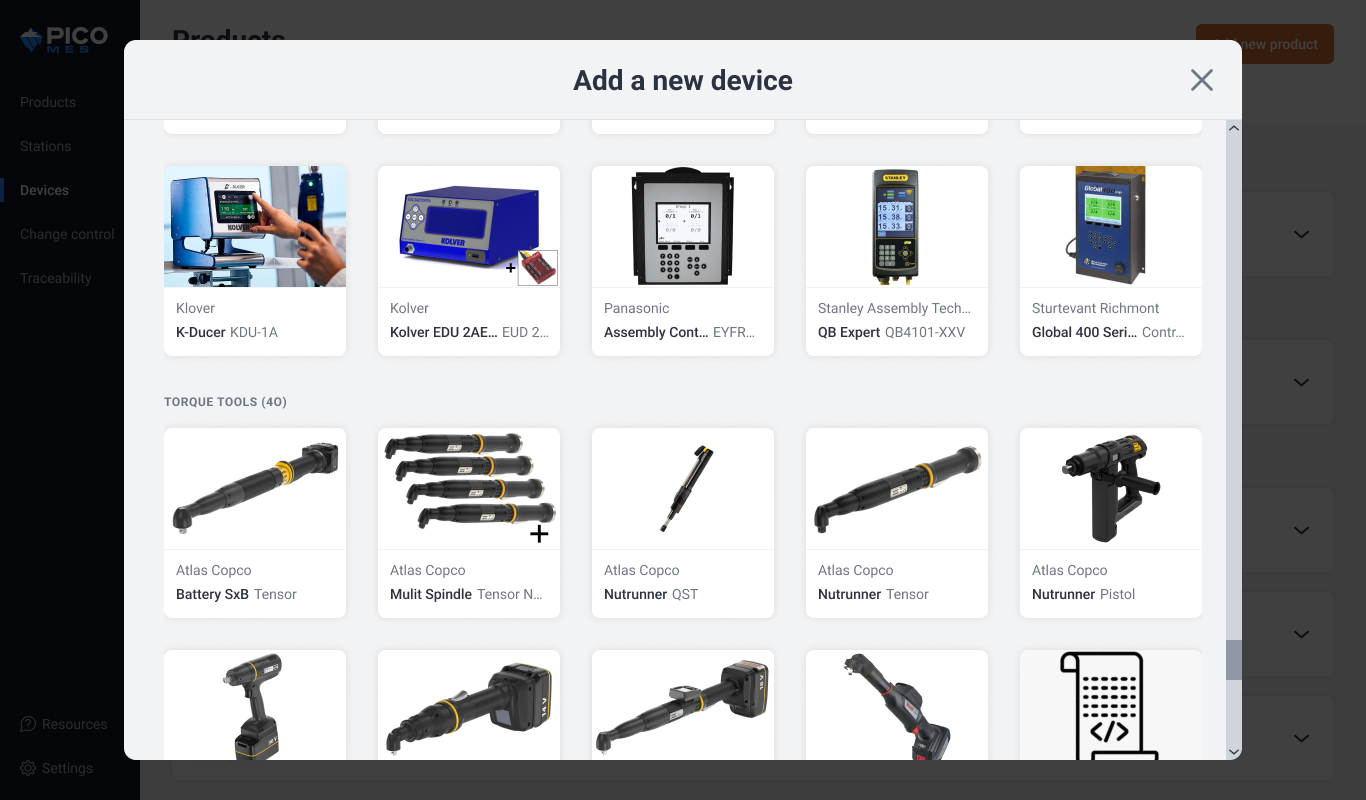#{ item.name }
#{ truncateText(item.metadescription) }
As factories lean into digital transformation, they need to not only grow their tech stack but also choose software systems that will seamlessly integrate and operate as a connected network. Understanding what manufacturing software is available, what each one does, and what the right ones are for your factory requires some research and evaluation. In this blog, we will define, compare, and examine the benefits of integrating two common software systems for assembly manufacturing: MES and ERP.
%20v2.png?width=600&height=400&name=MES%20vs%20ERP%20Table%20(600%20x%20400%20px)%20v2.png)
A Manufacturing Execution System (MES) is a software that lives on the production side of the factory. It is used to monitor and control manufacturing processes - such as assembly operations - and provide real-time data on production to track materials, labor, and equipment performance.
While MES software has historically been used to manage and relay manufacturing processes to operators on the shop floor, modern MES solutions are more flexible, agile, and scalable than legacy systems, which date back to the 1990s. Today’s systems, like PICO, focus on error-proofing manual assembly processes by combining digital work instructions with smart tool integrations. This functional combination is a key ingredient in implementing the poka-yoke method of preventing errors before they happen, and paves the way for automated data collection, real-time analytics, and backwards traceability that help manufacturers improve efficiency and quality.
➡️Take an interactive tour of PICO to learn about features like digital work instructions, tool integrations, and data analytics.
An Enterprise Resource Planning (ERP) system lives on the business side of the factory. How it is used varies depending on the company, but manufacturers typically rely on their ERP to manage inventory, work orders, and shipping logistics, as well as tracking materials and purchase requisitions. They can also connect to financial, operations, and sales data.
The ERP often serves as the central platform for data shared by other business applications, therefore making it a powerful tool that pieces all of a company’s functional departments together. Most likely, you’re already operating an ERP system at your factory to manage various operations.
Although both software systems fall under the category of “digital tools” aimed at streamlining operations and improving efficiency, they are designed to achieve these goals in different ways and in different areas of your business. Here are two key differences:
Watch this demo of how PICO tracks, references, and validates BOM and backflushes inventory for completed work orders into your integrated ERP system.
Now that we understand the fundamental differences between MES and ERP systems, let’s explore how these systems can work together and what the benefits of integrating them are in an assembly manufacturing environment.
When used in tandem, MES and ERP software complement each other to enhance overall operational efficiency and productivity. MES software provides real-time production data, which can be integrated with ERP software to facilitate data flow across the organization. The benefits of integrating MES and ERP software include:
Manufacturers of all sizes benefit from integrating MES and ERP software to gain a comprehensive view of operations from the shop floor to the executive level. The successful implementation of MES and ERP software in assembly manufacturing hinges on aligning these tools with the organization's goals, processes, and resources to drive continuous improvement and sustainable growth.

PICO seamlessly integrates with leading ERP systems such as Odoo, Infor, NetSuite, Plex, and SAP. Book a demo to learn more about how your factory can benefit from integrating MES and ERP systems.
#{ truncateText(item.metadescription) }
Step into the future of factory operations with Pico MES. Start your journey toward a more efficient, error-proof factory floor today.
